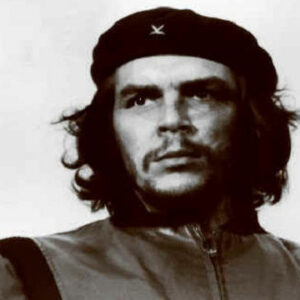Alberto Korda was Fidel Castro’s official photographer. His pictures are recognized for their durability. Che Guevara’s most iconic photograph, titled “Guerillero Heroico,” became a global symbol of revolution and revolt. After Che’s death as a martyr, this photograph appeared on T-shirts and album covers, and marketers began utilizing it to attract the attention of young people. However, Alberto never profited from this iconic shot. As a photographer, he sought to use natural light whenever possible. He utilized Cuban models for the first time to showcase Cuban clothing. Prior to this, he was primarily interested in fashion photography. As a result of the Cuban Revolution, the plight of the poor compelled him to change the focus of his photography. His photograph “La Nina” depicts the plight of the underprivileged. The images of Korda served as a record of the entire Cuban revolution under Fidel Castro’s rule. During his decade-long tenure as Castro’s official photographer, he exploited his photography skills to humanize Castro’s image in off-duty settings. In 1999, he appeared in the documentary “Buena Vista Social Club” by Wim Wenders.
Youth and Early Life
Alberto Diaz Gutierrez was Alberto Korda’s true name. Born in Havana, Cuba, his father was a railroad porter.
From 1946 to 1950, he studied business and commerce at Candler College, Havana. He afterward attended the Havana Business Academy.
Alberto Korda’s Career
After finishing his education, he worked in a candy factory. He afterward worked as a market researcher for a soap manufacturer. In addition to selling typewriter ribbons and laboratory serum as part of his profession, he also sold typewriter ribbons.
Beginning his photography career as a photographer’s assistant, he used to photograph banquets, weddings, and baptisms. In 1953, he started his first studio, Korda Studio, alongside photographer Luis Pierce.
They pursued diverse careers, ranging from fashion to advertising. Unique to his photography style was the fact that he would examine a subject from a different perspective.
For the objective of developing his expertise in black-and-white photography, he diligently focused on composition and framing. He opposed the use of artificial lighting in photography and solely utilized natural light in his studio.
His career was drastically altered by the Cuban revolution and his association with Fidel Castro. He served as his personal photographer for nearly a decade.
In his 1959 shot titled “El Quijote de la Farola,” he captured a peasant farmer perched on a lamppost and watching a gathering. The farmer’s appearance reflects his noble bearing.
In 1959, Korda and other photographers were given the opportunity to exhibit their images in a newly founded publication, so contributing to a national cause.
On March 5, 1960, he photographed 136 men who were killed in Havana when a Belgian ship carrying guns exploded in Havana harbor. He also captured a picture of Castro and Che together.
From 1968 to 1978, he focused primarily on underground photography, and a 1978 Japanese exhibition of his work sparked a great deal of worldwide interest in his work.
In 2000, he sued Smirnoff for using his photograph of Che Guevara in advertising because he opposed the usage of Che’s image to promote alcoholic beverages.
Alberto’s Major Opera
His Che Guevara is depicted in one of the important images titled “Guerrillero Heroico” which was taken on March 5, 1960, and labeled “Guerrillero Heroico.” In this photograph, Che’s face expresses both rage and suffering.
Personal History and Legacy
He had three marriages. Natalia (Norka) Menendez, a prominent Cuban model, was one of his spouses.
He died at age 72 after suffering a heart attack during an exhibition of his paintings. His descendants included two sons and two daughters.
Estimated Net Worth
Unknown.
Trivia
During the early stages of his profession, he showed a keen interest in photography and attractive ladies. This was the motivation for his interest in fashion photography.
This gifted photographer had an excellent rapport with Fidel Castro. Castro considered him more of a buddy or personal photographer than an official photographer.
When his shot of Che Guevara was rejected by the newspaper for which he was working, he placed a reproduction of it in his bathroom, where it stayed undetected for seven years.


